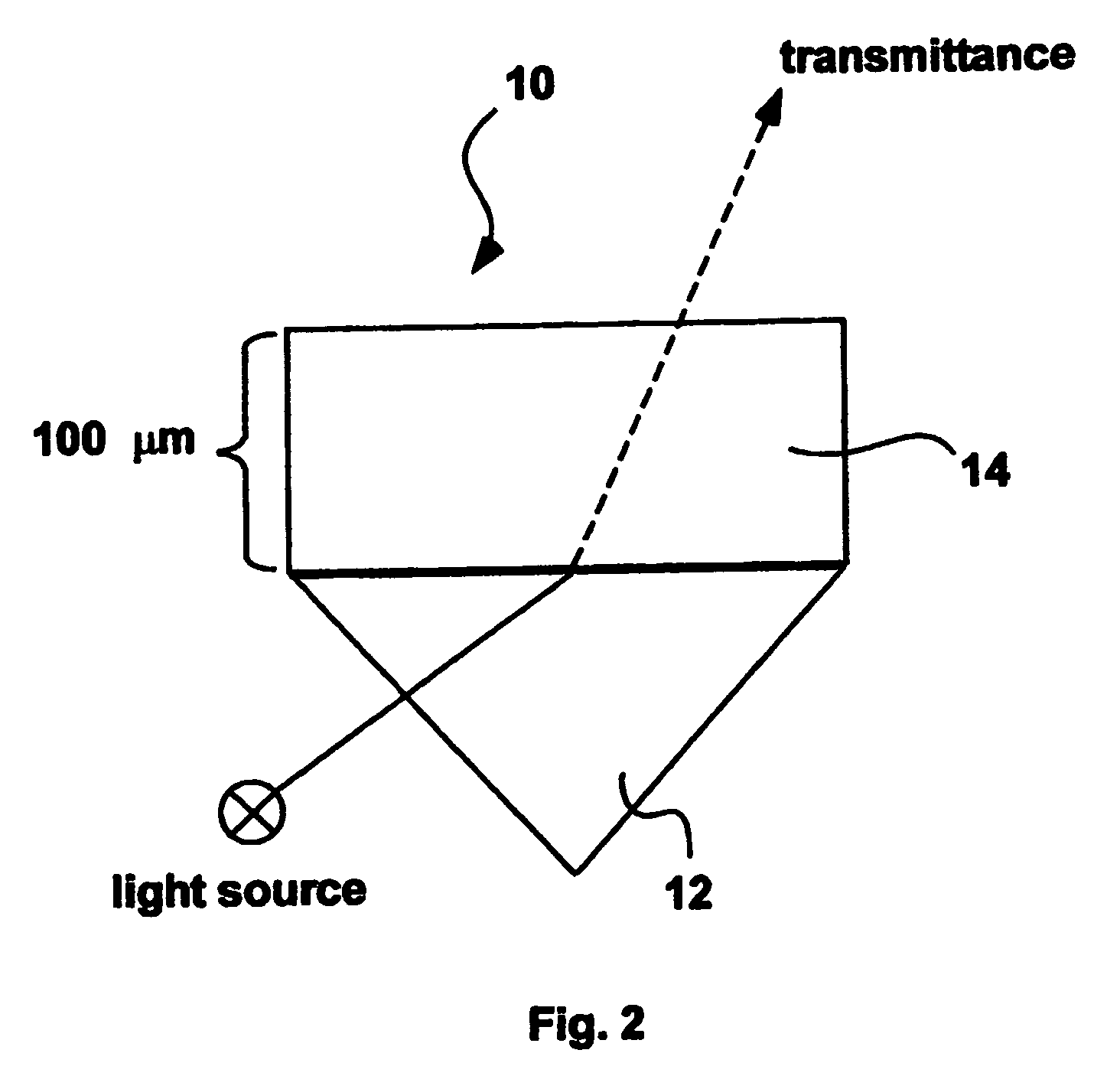Sensor device for interference and plasmon-waveguide/interference spectroscopy
a technology of interference and plasmon waveguide, applied in the field of optical sensor chips, can solve the problems of observing interference effects in both reflectance and transmittance modes, spr and cpwr spectroscopy, which are essentially limited to measurements, and achieve the effect of less risk of damage to the sensor
- Summary
- Abstract
- Description
- Claims
- Application Information
AI Technical Summary
Benefits of technology
Problems solved by technology
Method used
Image
Examples
Embodiment Construction
[0045]This invention is the result of further development of the CPWR devices described in our previous U.S. Pat. Nos. 6,421,128; 6,330,387; 5,991,488. In general the invention relates to a sensor for measuring the properties of molecules at surfaces and interfaces that has a dielectric layer or member that is of an optical thickness selected to produce an observable interference effect for an incident angle of light below a critical angle of total internal reflection. Moreover, the invention involves a sensor that combines the phenomena of optical interference and coupling of plasmons into waveguide modes in one sensing device. Thus, the sensor of the invention may be used to measure observable effects that occur both above and below the critical angle for total internal reflection.
[0046]It should be understood that the dielectric layer of the invention is in addition to and separate from the sample material or analyte with which the invention is used. The sample material at the in...
PUM
| Property | Measurement | Unit |
|---|---|---|
| thickness | aaaaa | aaaaa |
| thickness | aaaaa | aaaaa |
| incident angle | aaaaa | aaaaa |
Abstract
Description
Claims
Application Information
 Login to View More
Login to View More - R&D
- Intellectual Property
- Life Sciences
- Materials
- Tech Scout
- Unparalleled Data Quality
- Higher Quality Content
- 60% Fewer Hallucinations
Browse by: Latest US Patents, China's latest patents, Technical Efficacy Thesaurus, Application Domain, Technology Topic, Popular Technical Reports.
© 2025 PatSnap. All rights reserved.Legal|Privacy policy|Modern Slavery Act Transparency Statement|Sitemap|About US| Contact US: help@patsnap.com



